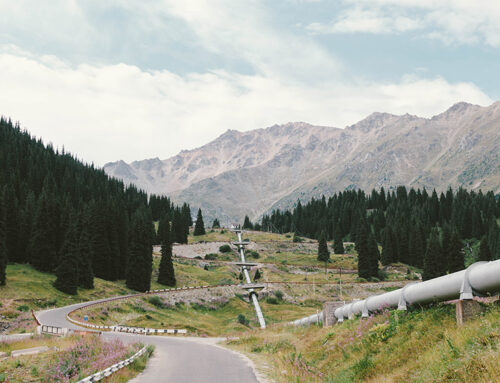The importance of protecting and maintaining OCTG
Purchasing OCTG usually involves a significant cost outlay, not to mention the infrastructure needed to house and protect the inventory once acquired. Failure to properly care for these goods can result in significant degradation and damage, which in turn can have the following negative outcomes:
- OCTG with compromised integrity – this can result in product failure, which is both unsafe and costly
- Damage to wells if compromised OCTG is not able to perform as needed
- Costly restoration or replacement of damaged OCTG
- Project delays due to suitable OCTG inventory not being available when needed
In this blog, we explore ways to ensure the safety of your OCTG, whether you’re handling, transporting or storing it.
Handling
Use appropriate handling equipment
To ensure safety when handling OCTG, it is crucial to use correct handling equipment that is specifically designed for OCTG. This includes pipe handlers and, in the case of CRA materials, specialist non-marking equipment that can securely grip and maneuver the pipes without causing damage or injury. All equipment should be subject to regular inspection and maintenance to ensure appropriate functioning.
Nurture a conscientious workplace culture
There are a number of ways that a workplace can build and foster a safety-focused culture. All relevant personnel should be properly trained in handling techniques, such as methodology, equipment usage, protective measures, load limits and balancing processes. This also extends to standardised ways of communicating and coordinating handling procedures, usually conducted through signals or radio communication.
Cleanliness is also key – maintaining a clean and organised storage area helps to minimise the risk of damage to inventory while also creating a safer work environment for employees. Working areas should be kept free of obstacles and fit-for-purpose storage areas should be laid out in a logical manner with a clear organisational system to facilitate straightforward handling.
Transportation and storage
Use appropriate transportation equipment
Given the immense size and weight of tubular goods, it’s crucial to use equipment that is able to prevent the movement or shifting of pipes during transportation – otherwise the pipes could be damaged or cause the transportation vehicle to become unbalanced. Examples of appropriate vehicles, depending on the context, include flatbed trailers or trucks that are equipped with the infrastructure needed to transport OCTG safely, including suitable bolsters and solid headboards. These vehicles must also be equipped with adequate load restraints that meet NHVR or other relevant legislation governing restraint requirements.
It’s also essential that proper loading and unloading procedures are followed at the start and end of transit. These can help to ensure that pipes are evenly distributed and reduce the risk of movement. Cranes or forklifts are generally used to execute these activities. Regular inspection and maintenance of this equipment is key to ensuring its longevity and capacity to operate safely. Inspectors should check the integrity of tires, the condition of securing straps or chains, and the reliability of mechanical processes.
These steps help guarantee alignment with the Chain of Responsibility, which ensures accountability in safety processes.
Ensure conditions and environment are appropriate
Moisture, extreme temperatures and environmental contaminants can cause OCTG to corrode, so making sure inventory is shielded from weather-related damage or saltwater contamination in transit and in storage should be considered a top priority. This can be achieved during transit through the use of weather-resistant tarps or by storing the pipe in an enclosed environment.
Similarly, the layout of storage facilities should be set up to mitigate against damage to OCTG. Minimising pipe movement will be key in this regard and can be facilitated through the use of racks or stands that keep the pipes off the ground while preventing bending or warping. It’s also important to find a balance between a secure storage area that prevents theft and unauthorised access, and an accessible environment that enables ease of access for authorised personnel.
Safety regulations and standards should be observed to avoid damage to inventory and to ensure the safety of those involved in transporting and storing it. This includes complying with weight limits, properly securing loads and adhering to relevant hazardous material transport guidelines.
Implement an inventory management system
A robust inventory management system will support you to record and track each item of inventory and to identify any changes in its condition using real-time tracking technologies. As well as offering another way to protect your OCTG, these systems can also be used to undertake predictive analysis to better plan future inventory purchases, driving efficiency and reducing the risk of projects being delayed due to insufficient inventory.
These guidelines are not exhaustive but they do provide an overview of some of the measures your organisation can take to help ensure OCTG is transported and stored in a manner that maintains its integrity and readiness for use, while also prioritising safety.
When you purchase OCTG through Pipesales, we undertake quality assurance processes to ensure the quality, safety and integrity of the goods. We also offer additional testing procedures, available on request,
Interested in buying or selling ready-made OCTG pipes? Visit the Pipesales global marketplace.






